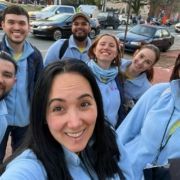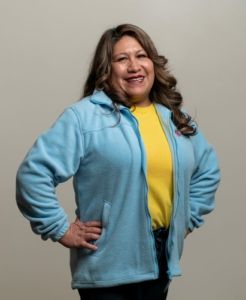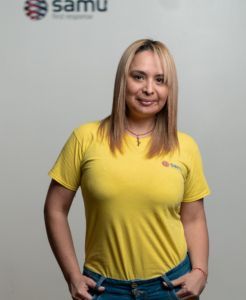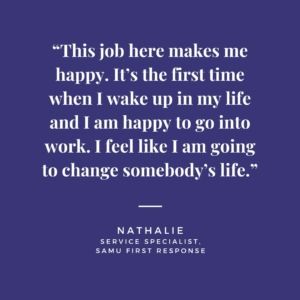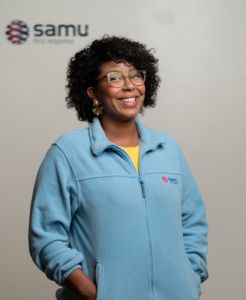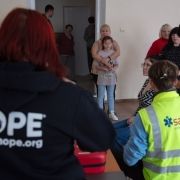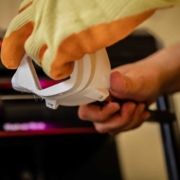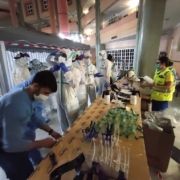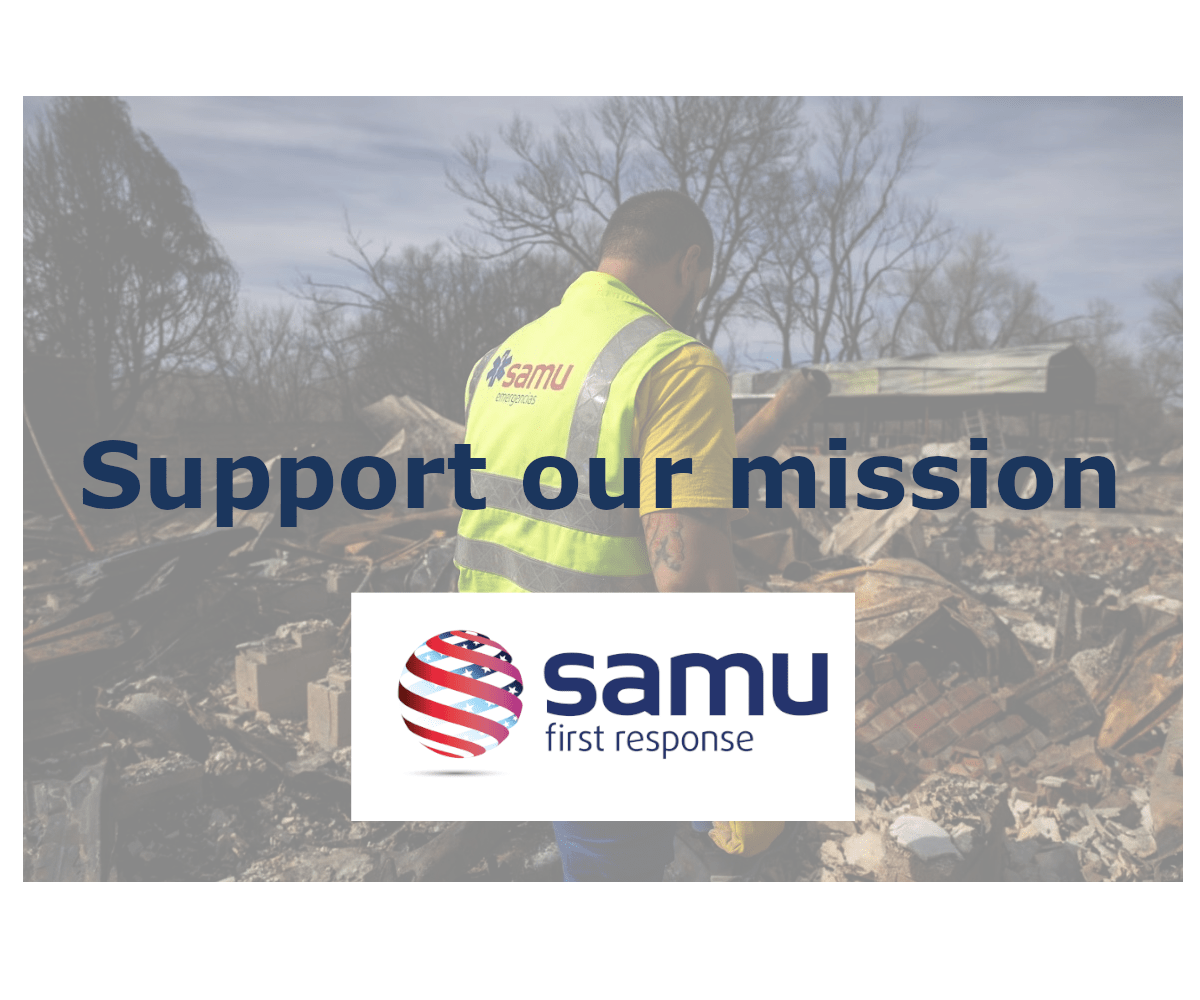Since its founding by Dr. Carlos Álvarez Leiva in 1981, SAMU has embraced opportunities for growth. What began with emergency medical services expanded to include a school, nursing facilities, homes for unaccompanied minors, and more. Carlos González de Escalada remembers his early days with the organization.
“When I first arrived to SAMU, my team was 25 people. Now we are 3,000,” he said.
It should come as no surprise, then, that the organization would look toward international expansion. Just shy of four decades after inception, SAMU beg
an exploring the potential of an operation based in Washington, D.C., where Dr. Álvarez Leiva’s sons—Juan González de Escalada and Borja González de Escalda—had both lived and worked.
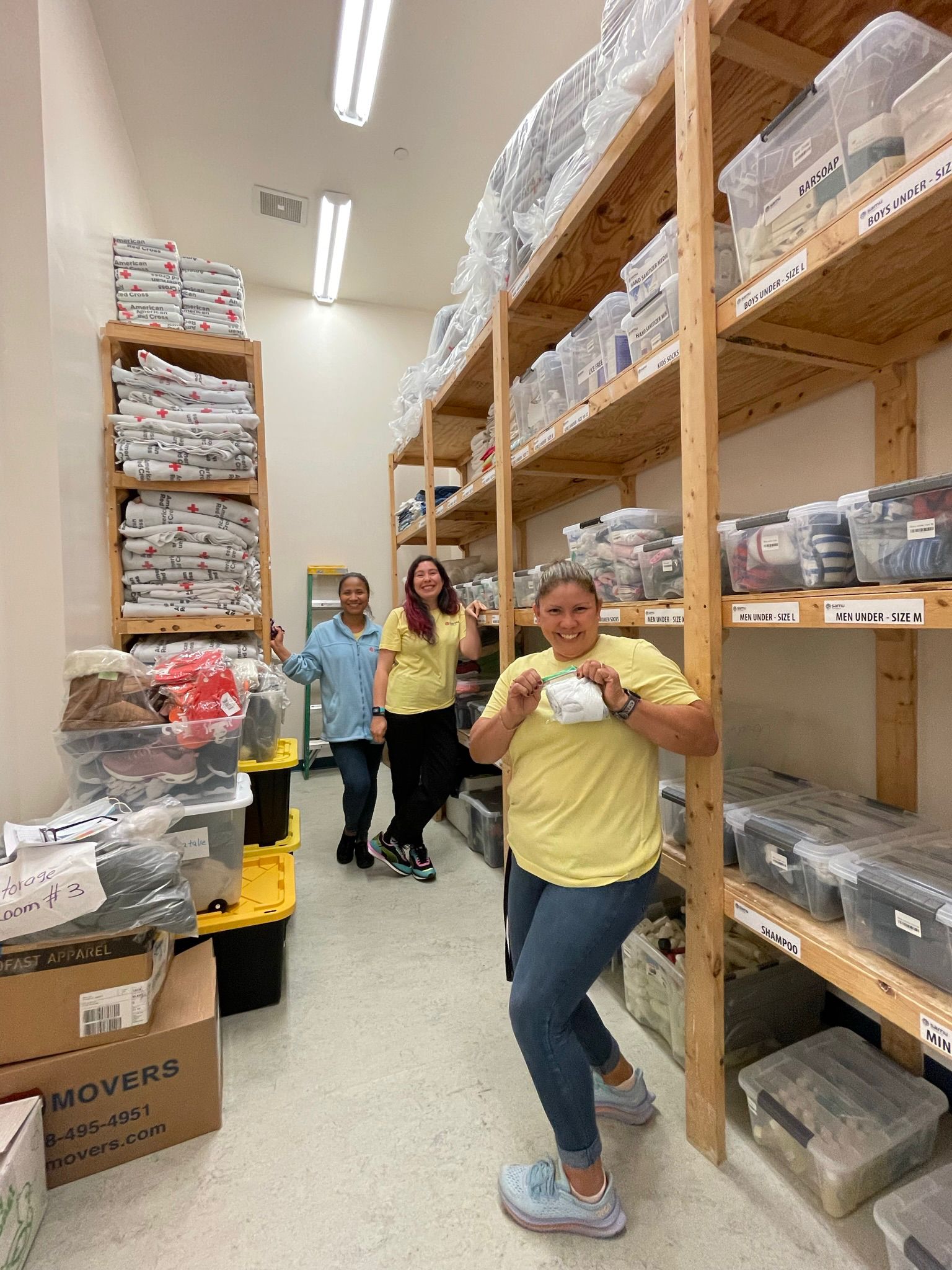
Members of the SAMU First Response Logistics and Service teams work on inventory of supplies donated by partners and the community to welcome newcomers arriving in the nation’s capitol.
Those first years were spent building partnerships to support the endeavor, including Project HOPE. Their Senior Manager of Domestic Operations, Harley Jones, oversees Project HOPE’s programming in the United States.
“As two globally based NGOs,” Jones said, “Our focus has been on various places around the world, supporting vulnerable populationsfleeing armed conflict or natural disaster. We are organizations that are made up of humanitarians and good people, focused on alleviating human suffering at the worst times of their lives.”
In 2020, a large influx of unaccompanied minors in the U.S. seemed the perfect fit. SAMU had extensive experience serving this vulnerable population, and the team began to explore establishing a shelter similar tothose it currently operated in Spain. But two years later, the team would pivot, transitioning to focus on what has become an incredibly successful mission to provide emergency response on U.S. soil.
The Crisis
On April 22, 2022, buses of migrants began arriving in the District of Columbia from several border crossing points in Texas. A month later, buses also began to arrive from Arizona. Initially, those arriving were met by area aid organizations, including Catholic Charities, the Central American Resource Center (CARECEN) and the Migrant Solidarity Mutual Aid Network—a coalition of community organizations andvolunteers from the DMV. Abel Nuñez, executive director of CARECEN, remembers the call he received about the first bus from the Mayor’s Office on Latino Affairs.
“They told me that Catholic Charities would be responding—and they did. That gave me a chance to go to my staff and get commitments that we would [also] respond,” Nuñez said. “Catholic Charities received the first two buses,and on the weekend, CARECEN started its journey in supporting the immigrants.”
Nuñez describes those early days as “organized chaos.” Buses were met at Union Station or in spaces provided by local churches.The teams receiving migrants providedthem with food, clothing, hygienic supplies, and medical attention, while conducting a basic intake. The numbers arriving initially were small—most had other destinations in mind. Less than 15% of migrants sought to stay in the area surrounding the District of Columbia. But, given their arrival in a foreign country, all required some measure of assistance to navigate next steps.
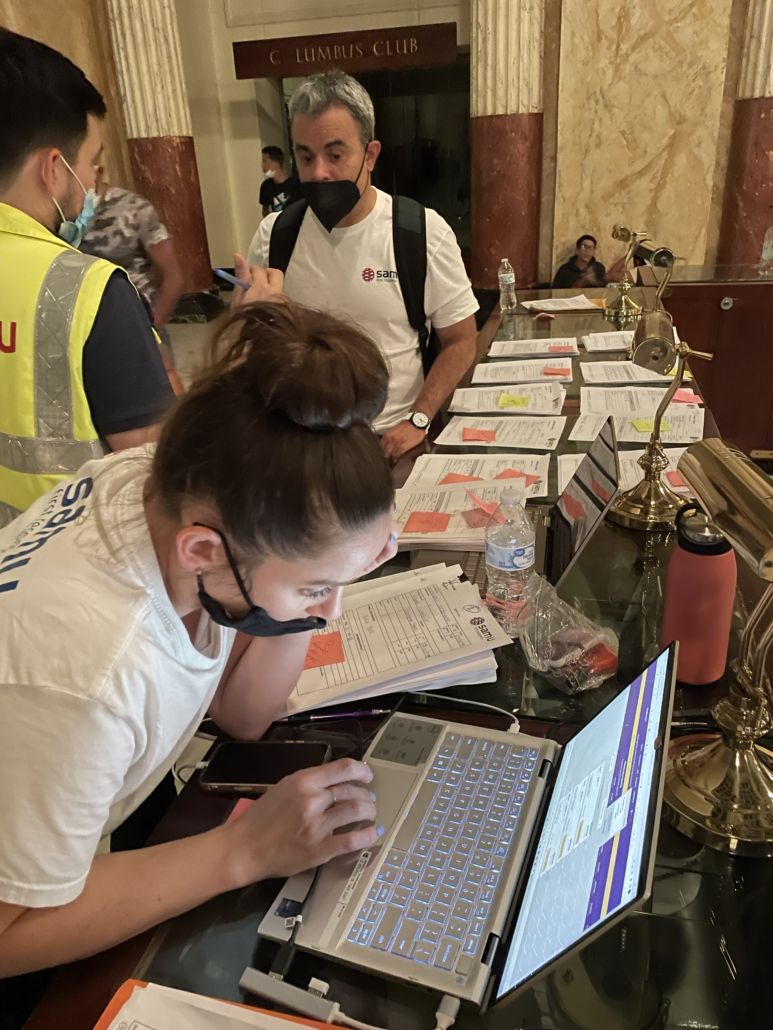
In the early days of arrivals, the SAMU First Response team received buses at Union Station in Washington, D.C., creating many logistical hurdles to overcome, including inconsistent wifi and lack of storage for supplies. The addition of a permanent reception and respite space has been incredibly impactful for the organization.
As the pace of arrivals from Texas began to increase, and buses from Arizona began, the logistics became increasingly challenging. “We realized that we needed to build better infrastructure and not think of this flow as temporary, but prepare for sustainability,” Nuñez said. The president of CARECEN’s board knew about the work SAMU Foundation was pursuing in the District and connected him with SAMU’s then Managing Director, Tatiana Laborde, as a potential resource.
“When you are engaged in emergency response during acrisis, the only way to have an effective response is to collaborate with other players on the ground,” Laborde said. “We started looking at the big picture with the early partners, including Catholic Charities and CARECEN.”
“I remember our first phone call,” Nuñez said. “She explained what SAMU was trying to do and offered assistance. At the same time the city was trying to identify an organization to take lead with Federal funding to respond. Both CARECEN and Catholic Charities had made decisions not [to] pursue the funding, but by then, I had been in conversation with Tatiana. I knew SAMU was the right organization, so I began the work of introducing them to the different stakeholders to build trust that they can do the job.”
“Tatiana was very quick to provide a response,” said Carlos González de Escalada, the Chairman of the Board for what would become SAMU First Response. “We said yes—go for it. Without a doubt.” The alliance between SAMU, CARECEN and Catholic Charities was formed. That coalition, along with the strategic partnerships with Montgomery County and the District of Columbia, remain foundational to the operation as it exists today.
The Operation
Once established as the lead response entity, SAMU applied for funds through the Emergency Food and Shelter Program operated by the Federal Emergency Management Agency. Spain sent experienced emergency response teams in to aid with policies and procedures that would enable the local team to refine the process. Hiring staff became a major focus, and a space in Montgomery County was identified for overnight respite—which the Spain team was integral in getting set up. With all the pieces falling into place, on June 21, 2022, SAMU First Response was able to officially open the doors to its new Respite Center.
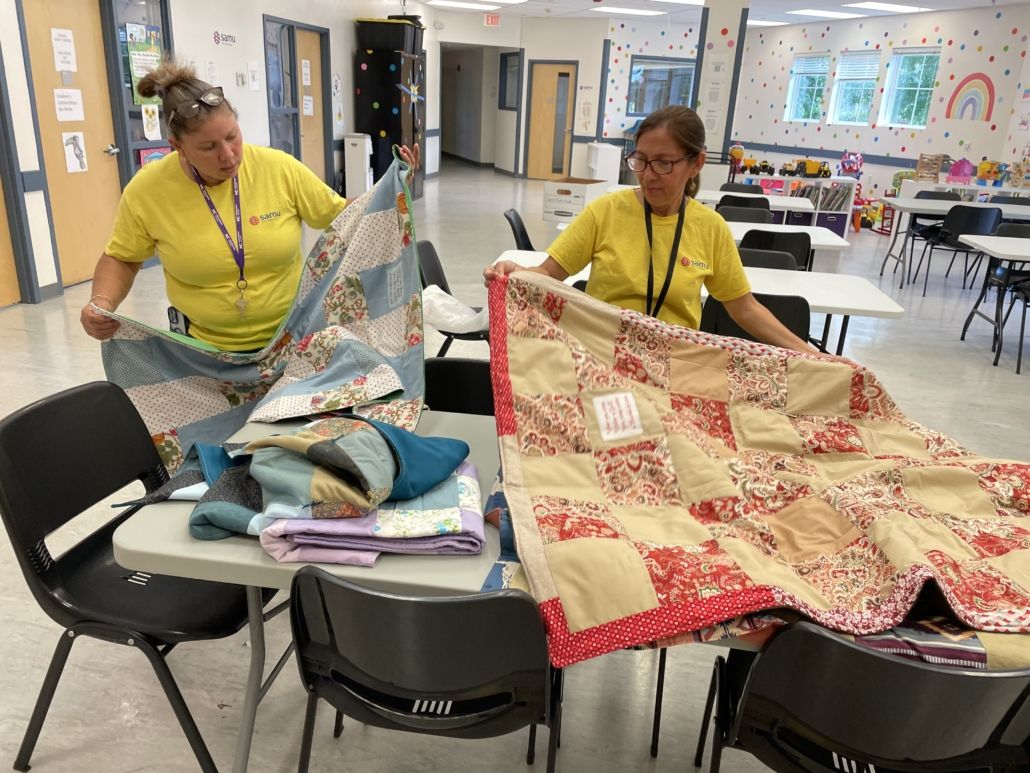
Members of the SAMU First Response team sort tiny handmade quilts donated by Church World Service. These comforting blankets are given to children upon arriving at our respite facility after an often traumatic journey.
“It allowed us to provide a more humane service to the migrants arriving,” Laborde said. “The interaction with arriving migrants transformed once we had a real respite facility available. It became less transactional because there was less of a push to get them on to their next destination. It allowed us space to breathe. The conversation shifted to, ‘Okay, let’s sit down. Have a meal that is not outside. Get cleaned up.’ We were able to restore their humanity.”
González de Escalada was there in those early days, with his sleeves rolled up, sweeping and mopping floors alongside the local team. When asked what SAMU was bringing to the table in this situation, González de Escalada had a clear answer: “immediate first response.”
“In a social crisis, like migration, somebody has to bring the experience and the management procedures in an intrinsically chaotic situation. When you are managing a crisis, you need to get your priorities really straight, because if you don’t know what you are doing in a crisis, you can make matters worse,” he said.
The Update
Since the beginning of the mission, SAMU First Response has met almost 200 buses and welcomed more than 7,500 individuals.The team has provided nearly 10,000 nights of respite and more than 32,000 meals.
Arrivals continue to fluctuate, sometimes widely. Although Texas buses stopped after December 2022, three arrived in less than a week in mid-May 2023. Arizona, which for the early part of 2023 was sending an average of one bus per week, now plans to send at least three. Buses are also not the only way migrants are coming into SAMU’s care. Referrals from both jurisdictional and community partners account for a large number of recent arrivals, which can vary between one to as many as 46 individuals per day. Transitions between jurisdictions are also on the rise, as migrants search for the best opportunities for themselves and their families.
Another growing trend has required additional overnight capacity. Whereas when the crisis began, only 15% wished to stay in the area, that figure is now closer to 50%. This has resulted in increased pressure for the District of Columbia to look for solutions. A newly formalized partnership with the District’s Office of Migrant Services has increased coordination on these efforts, and SAMU continues to work closely with the jurisdiction to identify contingency plans and, hopefully, an additional space for a respite facility within the city.
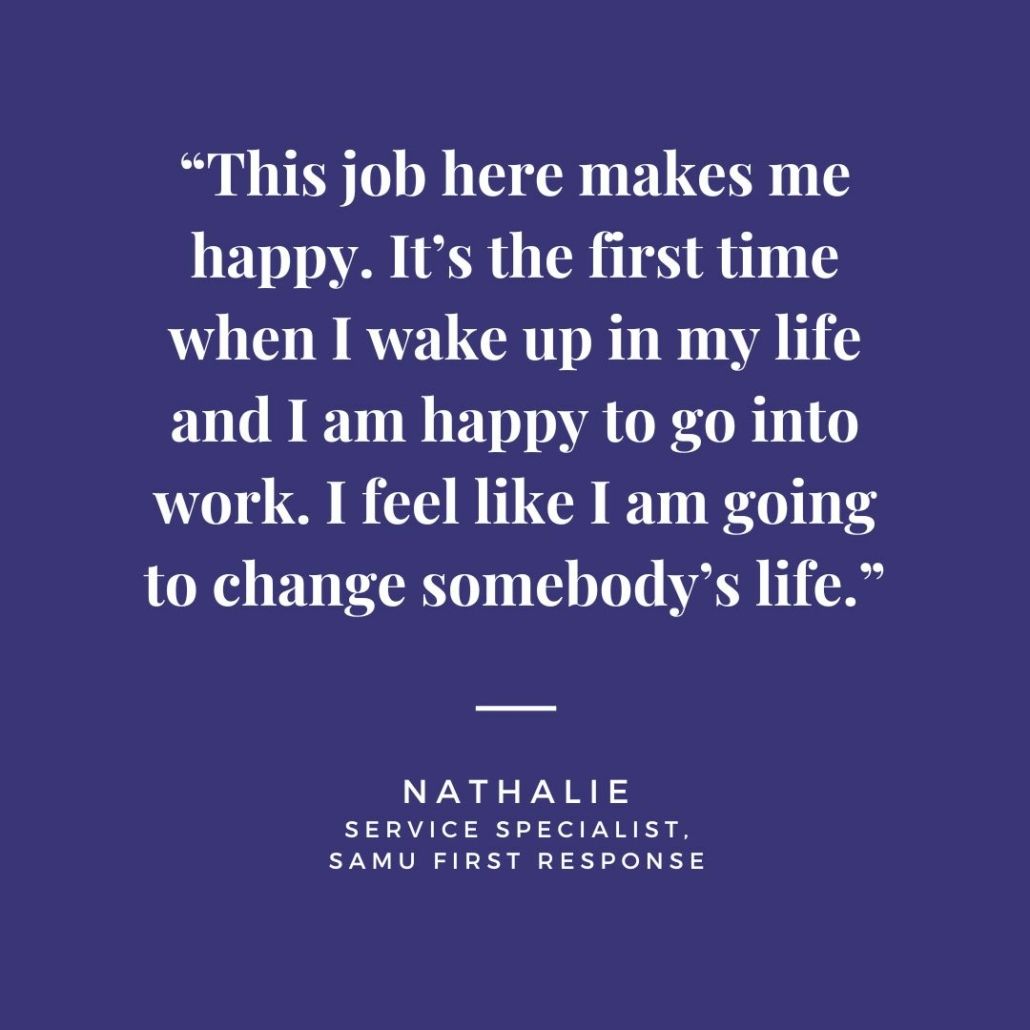
Despite these fluctuations, SAMU First Response remains ready for whatever comes next. CARECEN’s Abel Nuñez says it was an incredible amount of work to get to this point, but that he’s seen how relationship-building has led to SAMU’s success here.
“I consider SAMU an equal partner in the response,” he said. “We have kept an open line of communication and supported each other as we continue to build better infrastructure.”
SAMU First Response continues to build the operation, experiencing both incredible wins and challenging losses in what can be a very high-stress work environment. The biggest losses have been experienced through the loss of key internal staff. But, González de Escalada said, the team is resilient. Having a new mission with new staff and new leaders is challenging. Ideally, he explained, new leaders would be placed with existing staff, or new staff with existing leaders. That just wasn’t possible in this situation, yet he has been very impressed with what the team has accomplished.
“The biggest strength is that they love the job. They really believe in the cause. And when you believe in what you are doing, everything else is easier,” he said. “They have been brave, resilient, professional, eager to learn, and give their best. They have been compassionate. They have been kind.”
“They have done a fabulous, fabulous job. I don’t have words to thank them. The overwhelming feeling is gratitude. I am grateful, and very proud of the SAMU First Response team.”
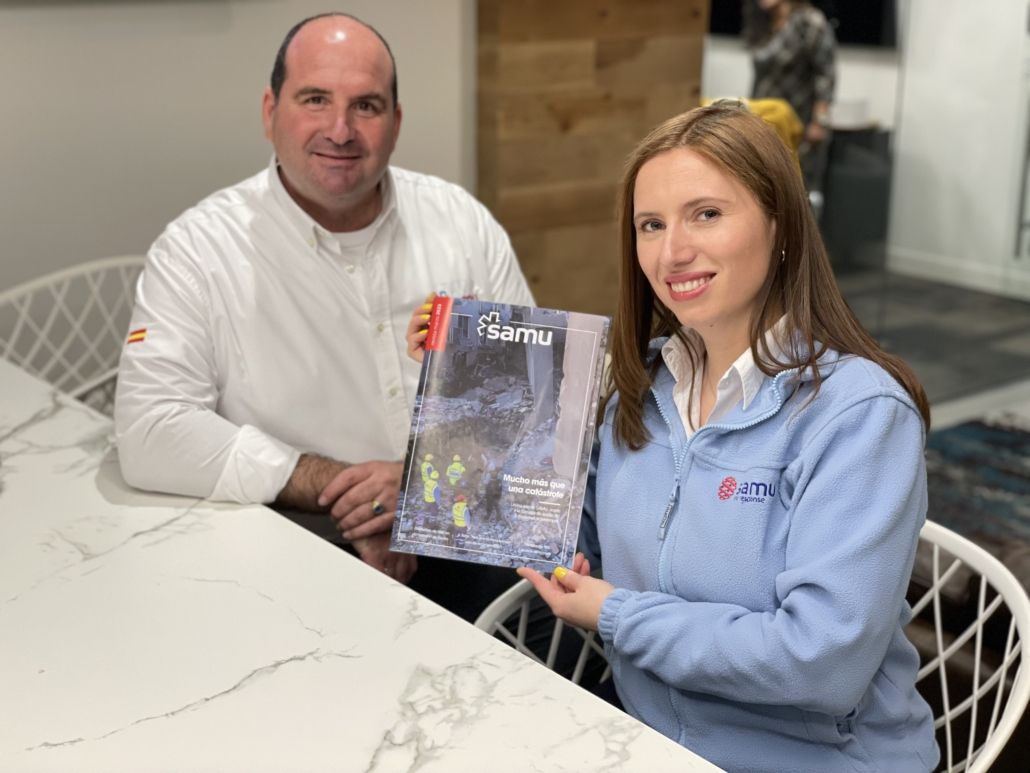
SAMU First Response Managing Director, Andrea Gallegos Montilla, holding a copy of SAMU Magazine, meets with Chairman of the SAMU First Response Board, Carlos Escalada. Escalada is also the Chairman and CEO of Grupo Samu, a health and social services organization headquartered in Seville, Spain.

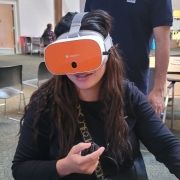
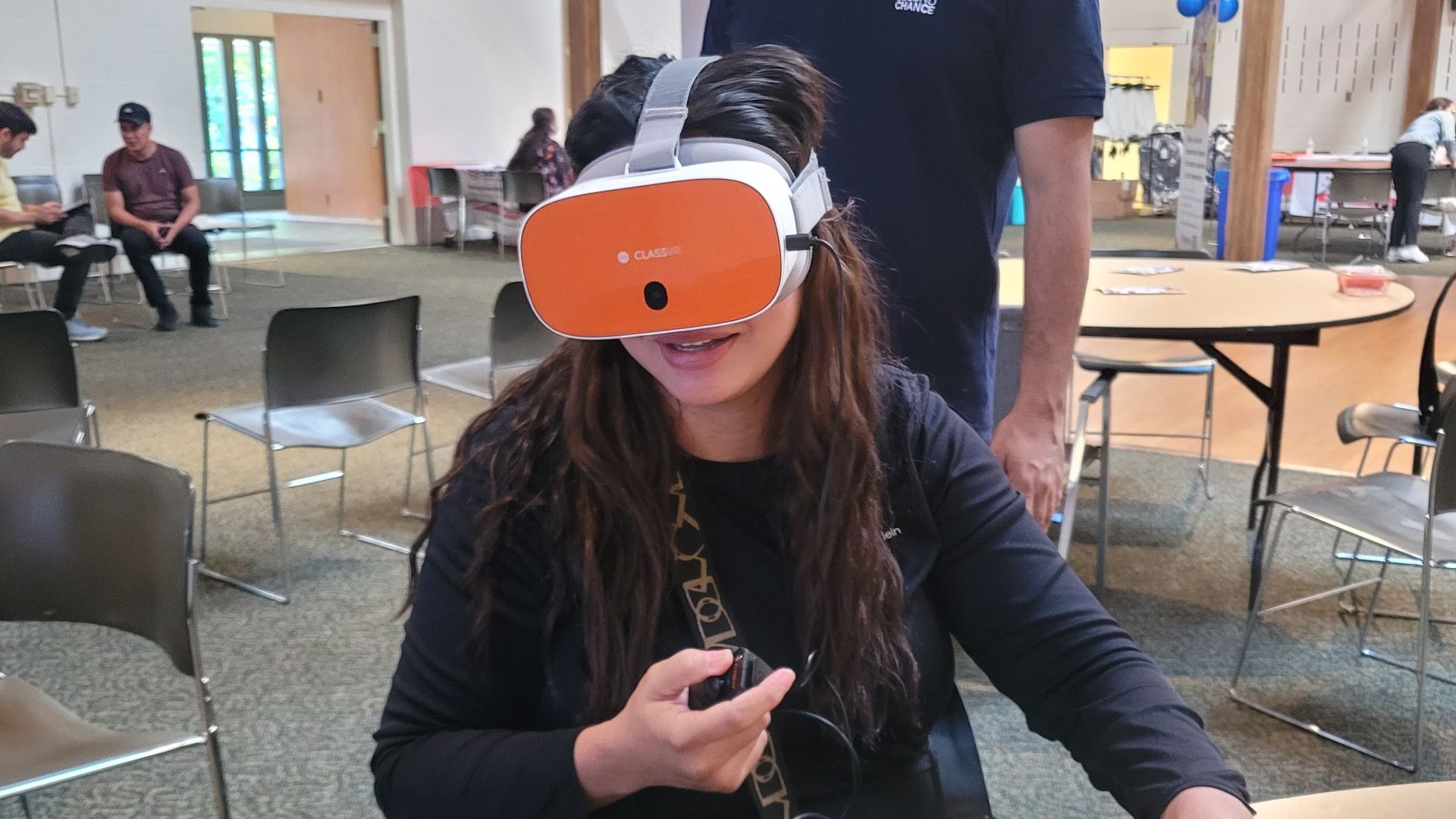
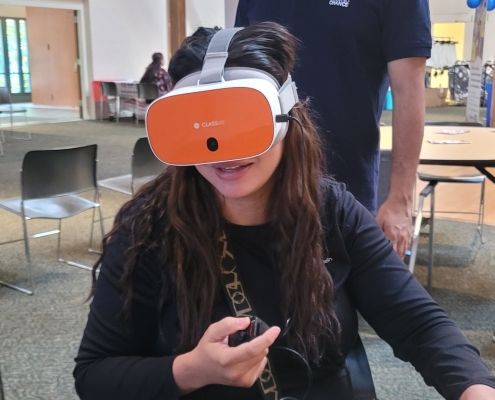
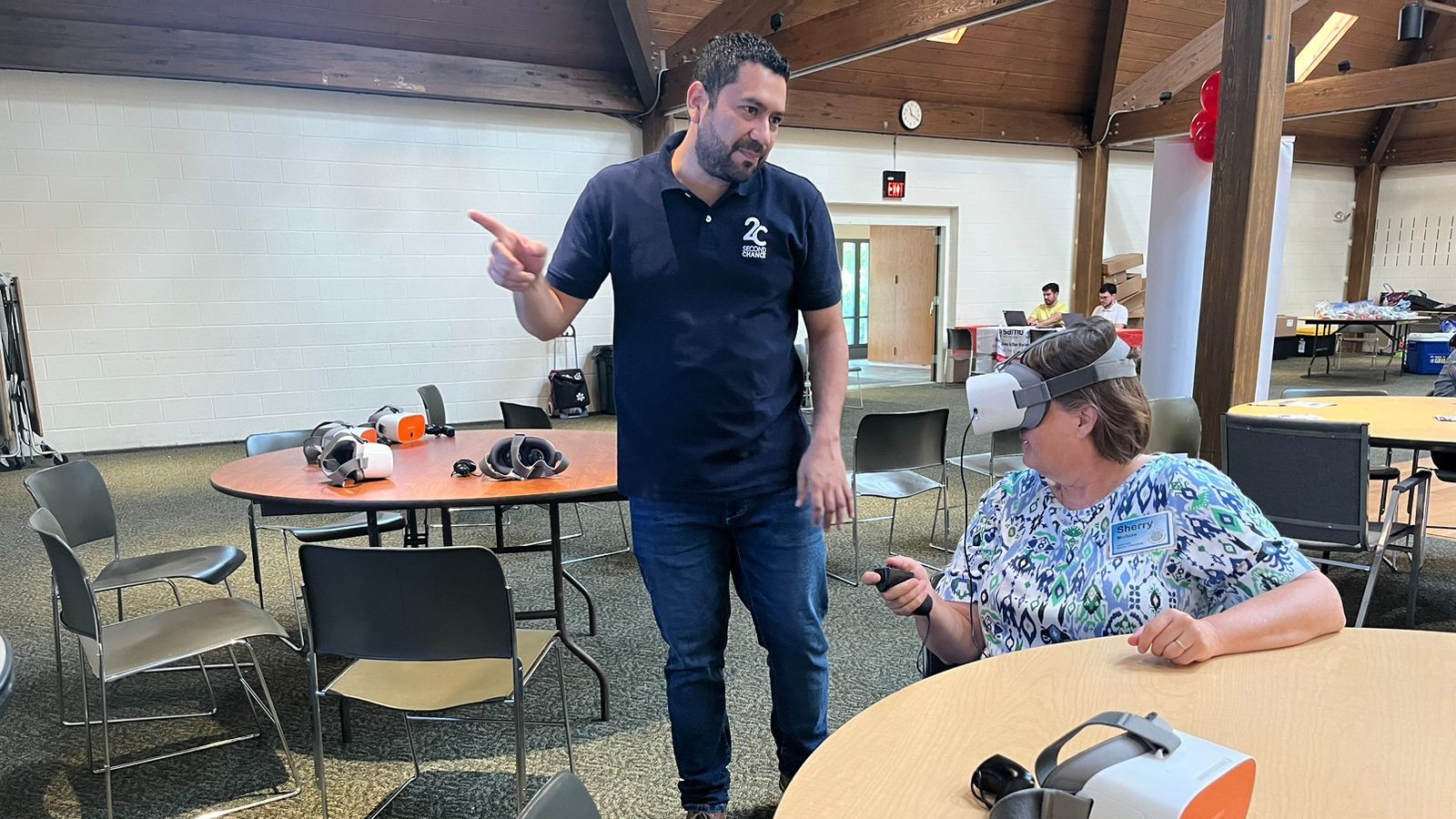
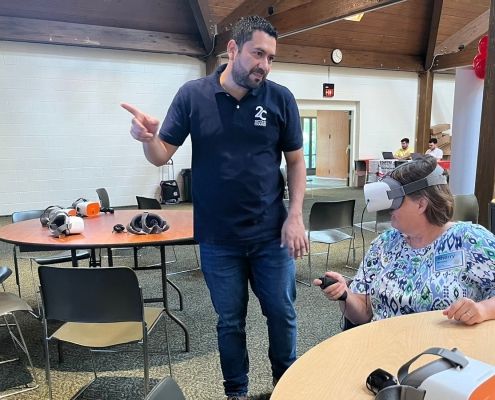
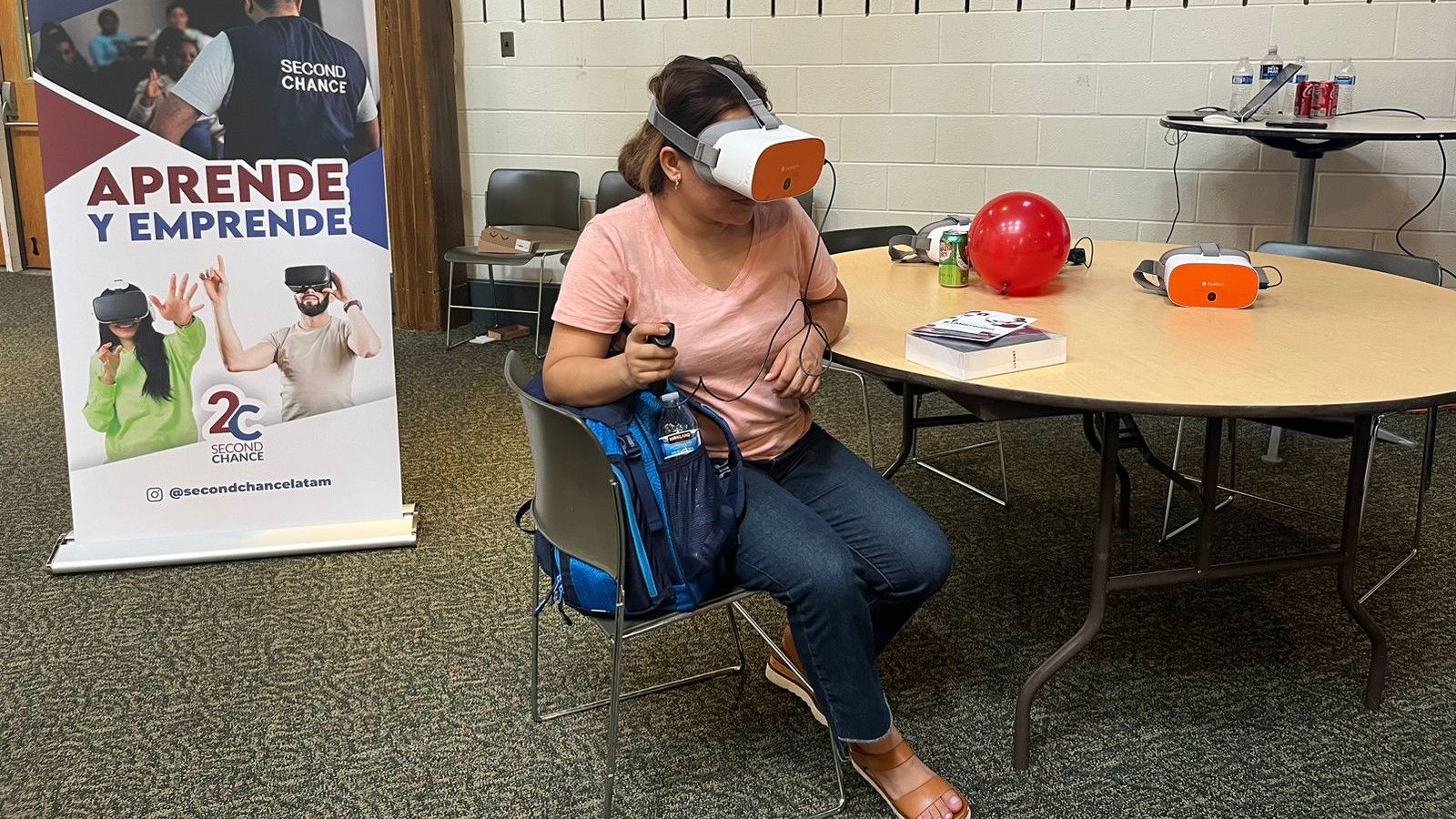
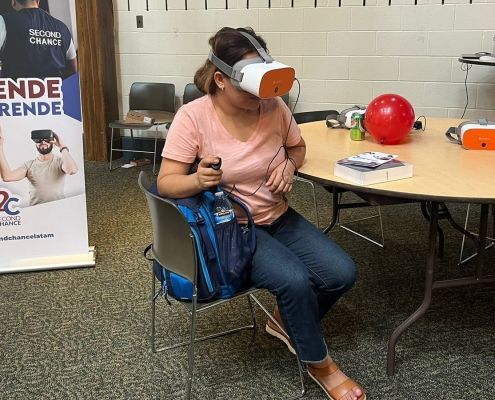

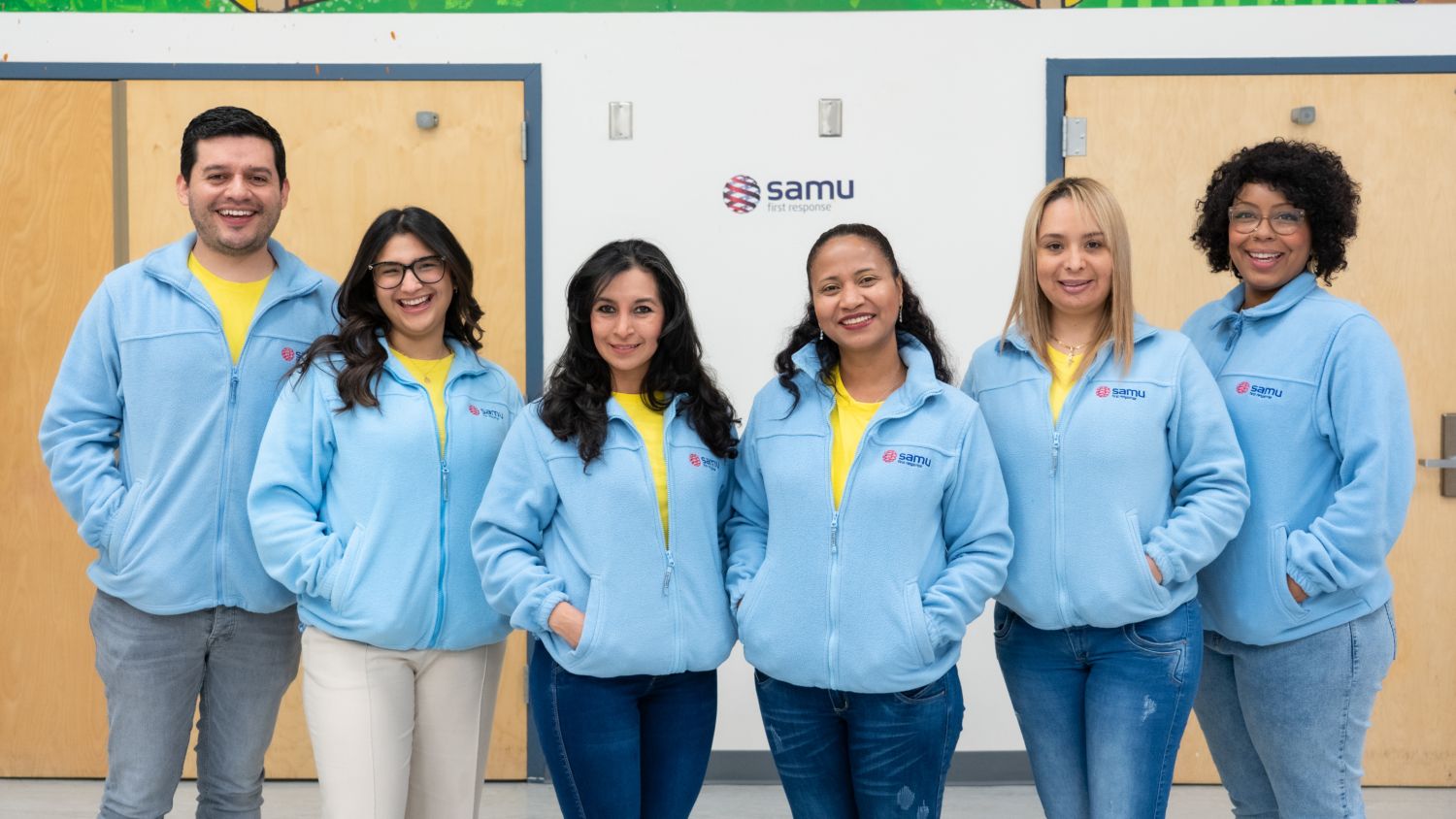 Since its founding by Dr. Carlos Álvarez Leiva in 1981, SAMU has embraced opportunities for growth. What began with emergency medical services expanded to include a school, nursing facilities, homes for unaccompanied minors, and more. Carlos González de Escalada remembers his early days with the organization.
Since its founding by Dr. Carlos Álvarez Leiva in 1981, SAMU has embraced opportunities for growth. What began with emergency medical services expanded to include a school, nursing facilities, homes for unaccompanied minors, and more. Carlos González de Escalada remembers his early days with the organization.




